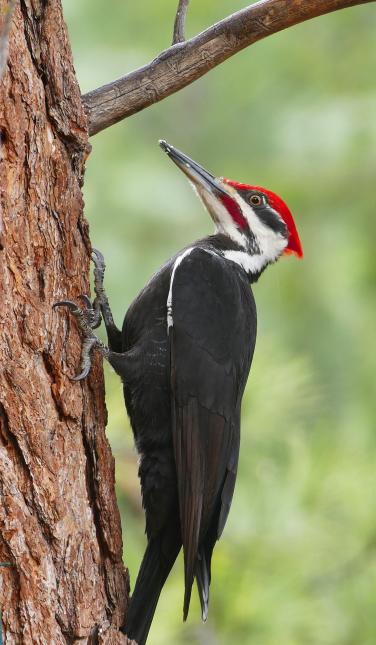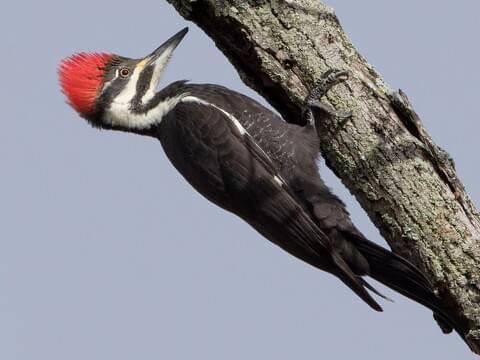Encountering Woodpeckers in Florida Variety: Habitats and Actions
Encountering Woodpeckers in Florida Variety: Habitats and Actions
Blog Article
Introducing the Secrets of Woodpeckers: Actions, Environment, and A Lot More
Woodpeckers, with their special habits and specialized adaptations, have lengthy interested scientists and nature enthusiasts alike. By revealing the secrets surrounding woodpeckers' actions and environment choices, a deeper understanding of these bird marvels arises, using a peek into their remarkable world.
Woodpecker Behavior Insights
In analyzing woodpecker actions, an interesting display screen of specialized abilities and adjustments arises, clarifying their amazing environmental specific niche - Woodpeckers in Florida. Woodpeckers, recognized for their distinctive drumming on trees, possess a variety of behavior qualities that contribute to their survival and success in their atmosphere. One essential actions is their drumming, which serves multiple functions such as communication, establishing region, attracting mates, and finding food resources. This rhythmic pecking likewise showcases their amazing stamina and endurance, as they can hammer away constantly at broadband without creating injury to themselves.
Furthermore, woodpeckers exhibit a distinct feeding behavior characterized by their capability to extract insects from tree bark utilizing their specialized beaks. Their long, barbed tongues aid in recording prey, while their strong neck muscles supply stability and precision during pecking activities. This feeding approach permits woodpeckers to accessibility concealed insect larvae and extract them with amazing efficiency.
Environment Preferences and Selection
What factors influence the habitat choices and selection of woodpeckers? One essential variable affecting woodpecker environment choice is the availability of ideal nesting sites. Woodpeckers normally choose woodlands with a mix of mature trees that offer ample chances for cavity excavation.
Additionally, woodpeckers reveal a choice for habitats with a bountiful supply of food resources. They are mainly insectivorous, preying on beetles, ants, larvae, and various other pests located in rotting wood or tree bark. Consequently, woodpeckers tend to prefer wooded locations with a diverse insect populace to meet their dietary requirements.
In addition, the existence of dead or worn out trees is one more essential consider woodpecker environment selection. These trees not just supply food sources yet likewise provide suitable substrate for dental caries excavation. Dead trees are essential for the maintenance of healthy and balanced woodpecker populaces, as they play an important duty in the woodpeckers' life process and environment characteristics.
Feeding Practices and Diet Composition
Woodpeckers show a specialized feeding habits focused on foraging more info here for insects within various environments. Their diet plan mostly consists of insects such as beetles, ants, caterpillars, and spiders, which they locate by tapping on tree bark and paying attention for the sound of activity inside. Woodpeckers utilize their solid beaks to pierce into the wood and their long, barbed tongues to extract prey from holes. In enhancement to insects, woodpeckers additionally take in tree sap, fruits, nuts, and seeds, including selection to their diet regimen relying on the period and availability of food sources.
The foraging methods of woodpeckers are well-adapted to their arboreal way of life. Woodpeckers play a critical function in preserving the health of woodlands by controlling insect populations and helping in the disintegration of timber.
Drumming Seems and Communication
Utilizing fast drumming sounds on various surface areas, woodpeckers employ an unique kind of communication to signal territory limits and bring in friends. This drumming behavior is not just a way of interaction yet likewise acts as a method for woodpeckers to develop their existence within a specific area. The intensity, rate, and pattern of the drumming can convey vital official statement details to various other woodpeckers in the area.
Woodpeckers utilize drumming noises to reveal their visibility in a territory and to alert off potential burglars. The loud and repetitive nature of the drumming works as a clear signal to various other woodpeckers that the area is already claimed. This aids in decreasing problems and lessening physical battles in between people.

Survival Adaptations and Specialized Composition

Final Thought
Finally, woodpeckers display distinct behaviors, such as drumming noises for communication, and have specialized makeup for survival in their chosen environments. Their feeding habits and diet regimen make-up even more demonstrate their flexibility to numerous atmospheres. By recognizing these aspects of woodpeckers, researchers and conservationists can better secure and maintain these remarkable birds and their ecosystems.
Report this page